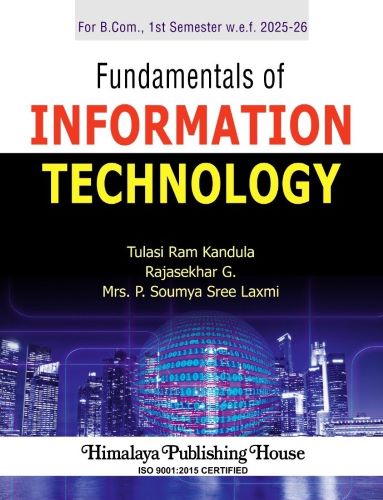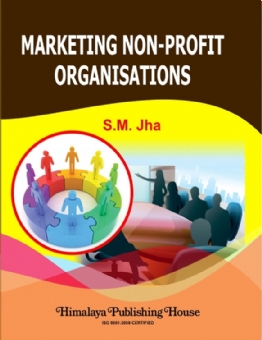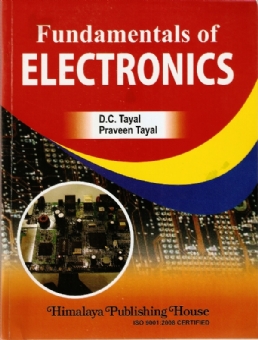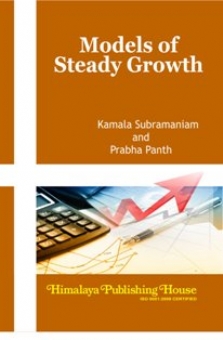In today’s digital age, the backbone of every successful enterprise lies in its ability to harness information technology effectively. From managing business operations to enabling informed decision-making, the role of computing in commerce is both vital and transformative. In alignment with this growing relevance, the B.Com. (Computer Applications) curriculum under the Faculty of Commerce, Osmania University, has introduced a revised CBCS syllabus effective from the academic year 2025–2026.
This textbook, “Fundamentals of Information Technology” has been meticulously crafted to meet the objectives of the updated syllabus. The content is organized into five well-structured units that cover a wide spectrum of foundational IT concepts—from computing and digital business fundamentals to software applications, enterprise tools, data storage, networking, and cyber security. The book aims to offer not just theoretical clarity, but also practical proficiency through real-world illustrations and step-by-step tutorials on MS Word, Excel, and PowerPoint.
Topics such as cloud computing, Software as a Service (SaaS), Mail Merge, data validation, pivot tables, VLOOKUP, and multimedia presentations have been discussed in detail to enhance hands-on learning and align with current industry practices. The inclusion of assessments, examples, and visual aids ensures that students gain both academic insight and workplace readiness.
Contents –
Unit-1 Foundations of Computing and Digital Business
1.1 Information to Digital Transformation in Business
1.2 The Benefits of Digital Transformation
1.3 Most Important Aspects of Digital Transformation
1.4 Strategic Role of it in Functional Areas
1.4 Components of a Computer System
1.5 Hierarchy of Programming Language
1.6 Input Devices
1.7 Output Devices
1.8 Bits, Bytes and Data Representation
1.9 Ethical and Social Aspects of Computing
Digital Privacy: The Ethical Core of The Digital Age
General Data Protection Regulation (GDPR)
Digital Personal Data Protection Act (DPDPA), 2023 – India
1.10 Digital Divide: a Socio-Technical Inequality
1.11 Intellectual Property (IP): Protection, Ethics, and Digital Realities
1.12 Emerging Technologies
Review Questions
Unit-2 Data, Storage and Logical Foundations
2.1 Binary Logic
2.2 Importance of Binary Logic
2.3 Applications of the Binary System In Computing and Digital Tech
2.4 Binary Number System
2.5 Binary Arithmetic Operations
2.6 Basic Logical Operations in Binary
2.7 Types of Storage
2.8 Cloud Storage vs. Local Storage
2.9 Types of Cloud Storage
2.10 Cloud Storage Deployment Models
2.11 Business Applications of Cloud Storage
2.12 Local Storage
2.13 Business Applications of Local Storage
2.14 File Systems and Organization
2.15 Files
2.16 Folders (Directories)
2.17 File Extensions
2.18 Conceptual Database Overview
2.19 Business Applications of Databases
2.20 Database Management System (DBMS)
2.21 Tables, Fields and Record
2.22 Organizing Business Data
2.23 Understanding Data Structures
2.25 Structured vs. Unstructured Data
2.26 Best Practices for Organizing Data
2.27 Role of Data In Business Decision-Making
2.28 Data-Driven Decision -Making Process
2.29 Traditional vs. Data-Driven Decision-Making
Review Questions
Unit-3 Software Applications For Business
3.1 Operating System
Functions of an Operating System
Types of Operating System
Microsoft Windows
MACOS: The Apple Macintosh Operating System
LINUX: The Open Source Operating System
ANDROID: The World’s Leading Mobile Operating System
IOS: The Mobile Operating System By Apple
3.2 Utility Software: Ensuring System Efficiency and Security
Antivirus
Backup Software
File Compression Software
System Clean-Up tools
3.3 Word Processing
Features of Word Processing Software
Examples of Word Processors
Text Formatting in Microsoft Word
Working with Tables In Word
Inserting and Using a Blank Table
Modifying Tables in Microsoft Word
Working with Tables in Word: Inserting and using a Blank Table
Mail Merge
Collaborative Editing in Microsoft Word
3.4 Spreadsheets
Introduction to Excel Formulas and Cell References
Sum Function
Vlookup Function
Data Charts in Excel
Data Validation in Excel
Introduction to Pivot Tables
3.5 Presentations
Introduction to Presentation Software
Transitions in Powerpoint
Multimedia Integration in Powerpoint Presentations
3.6 Enterprise Software
An Introduction
Enterprise Resource Planning (ERP)
CRM: Customer Interaction Management
Database Management System (DBMS)
3.7 Software as a Service (SAAS)
Cloud-Based Application Delivery Model
Use Cases in Business Operations
Review Questions
Unit-4 Networking and Internet In Business
4.1 Introduction
Role of Communication in Business
Role of Networks and Internet in Business
4.2 Definitions
What is a Network
What is Internet
What is a Protocol
What is a Communication Protocol
What is a Subnet
What is TCP/IP
4.3 Types of Networks
LAN – Local Area Network
WAN – Wide Area Network
MAN – Metropolitan Area Network
WLAN – Wireless LAN
Summary of Advantages and Limitations of four Types of Networks
4.4 Network Topologies
Introduction
Bus Topology
Star Topology
Ring Topology
Mesh Topology
4.5 Network Devices
Switch
Routers
Mode
4.6 Client Server Architecture
Core Components and their Interplay
Communication Protocols and Network Foundation
Types of Clients
The Request-Response Cycle: How Client-Server
Communication Works
Architectural Models: Understanding Tiered
Client-Server Systems
Real-World Application
4.7 Internet Fundamentals
Internet Protocol IP
4.8 The Domain Name System (DNS)
The Internet’s Phone Book
How DNS Works: a Step-by-Step Resolution Process
4.9 a URL(Uniform Resource Locator)
4.10 Browsers
4.11 Search Engines
4.12 e-Commerce
e-Commerce – Models and Relevance
Relevance of e-Commerce Model
4.13 Social Media in Business
Crafting a Winning Social Media Strategy
The Multifaceted Role of Social Media in Business
4.14 Data Communication
Introduction to Wired Communicaiton
Introduction to Wireless Communications
4.15 Bandwidth and Speed
Bandwidth
Speed
Review Questions
Unit-5 Cloud Computing and Cyber Security
5.1 Cloud Computing
Introduction
Definition
Types of Cloud Computing
Characteristics of Cloud Computing
Benefits of Cloud Computing
Challenges of Cloud Computing
5.2 Service Models
Software as a Service (SAAS)
Platform as a Service (PAAS)
Infrastructure as a Service (IAAS)
5.3 Deployment Model
Public Cloud
Private Cloud
Hybrid Cloud
5.4 Cyber Security Essentials
Types of Threats
Malware
Phishing
Dos Attacks
5.5 Proactive Measures
Strong Passwords
MFA
Antivirus
Firewalls
Data Backup and Recovery
Safe Browsing Practices
5.6 Introduction to Cyber Laws and Data Privacy Regulations
Introduction to Cyber Laws
Data Privacy Regulations
The General Data Protection Regulation (GDPR)
The Digital Personal Data Protection Act (DPDPA)
Review Questions







